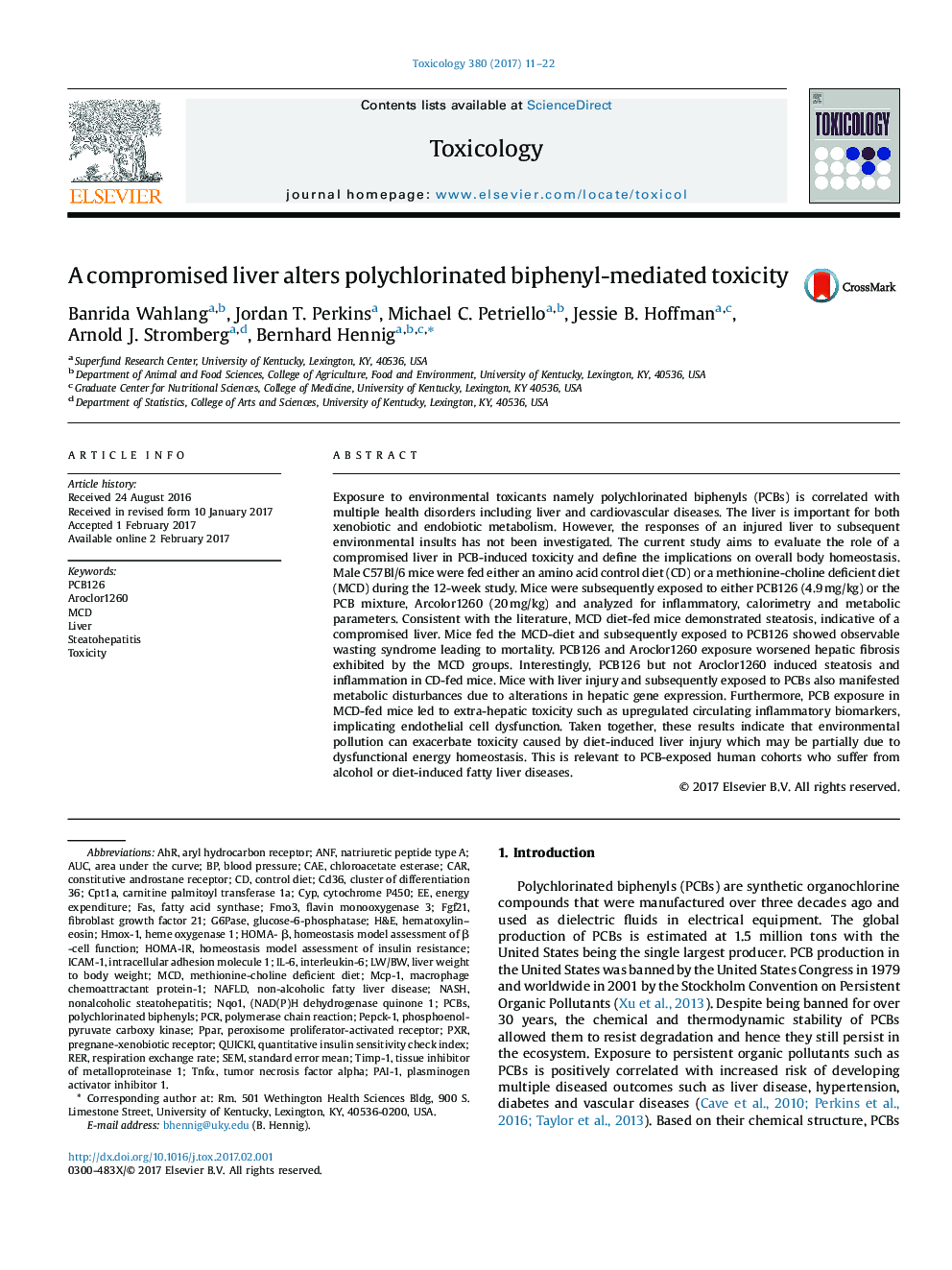| کد مقاله | کد نشریه | سال انتشار | مقاله انگلیسی | نسخه تمام متن |
|---|---|---|---|---|
| 5561817 | 1562292 | 2017 | 12 صفحه PDF | دانلود رایگان |
- Polychlorinated biphenyls (PCBs) are persistent environmental contaminants that are associated with liver and cardiovascular diseases.
- PCBs comprised of >200 congeners based on chlorine substitution with exposure to different congeners leading to different diseased outcomes.
- The current study utilizes a fibrotic-mouse model to study PCBs, either as a single congener (PCB126) or a mixture of congeners (Aroclor1260).
- PCB exposure in mice that already have an injured or compromised liver worsen overall inflammation and disrupted normal liver function.
Exposure to environmental toxicants namely polychlorinated biphenyls (PCBs) is correlated with multiple health disorders including liver and cardiovascular diseases. The liver is important for both xenobiotic and endobiotic metabolism. However, the responses of an injured liver to subsequent environmental insults has not been investigated. The current study aims to evaluate the role of a compromised liver in PCB-induced toxicity and define the implications on overall body homeostasis. Male C57Bl/6 mice were fed either an amino acid control diet (CD) or a methionine-choline deficient diet (MCD) during the 12-week study. Mice were subsequently exposed to either PCB126 (4.9Â mg/kg) or the PCB mixture, Arcolor1260 (20Â mg/kg) and analyzed for inflammatory, calorimetry and metabolic parameters. Consistent with the literature, MCD diet-fed mice demonstrated steatosis, indicative of a compromised liver. Mice fed the MCD-diet and subsequently exposed to PCB126 showed observable wasting syndrome leading to mortality. PCB126 and Aroclor1260 exposure worsened hepatic fibrosis exhibited by the MCD groups. Interestingly, PCB126 but not Aroclor1260 induced steatosis and inflammation in CD-fed mice. Mice with liver injury and subsequently exposed to PCBs also manifested metabolic disturbances due to alterations in hepatic gene expression. Furthermore, PCB exposure in MCD-fed mice led to extra-hepatic toxicity such as upregulated circulating inflammatory biomarkers, implicating endothelial cell dysfunction. Taken together, these results indicate that environmental pollution can exacerbate toxicity caused by diet-induced liver injury which may be partially due to dysfunctional energy homeostasis. This is relevant to PCB-exposed human cohorts who suffer from alcohol or diet-induced fatty liver diseases.
159
Journal: Toxicology - Volume 380, 1 April 2017, Pages 11-22
